Imipramine hydrochloride
Synonym(s):10,11-Dihydro-N,N-dimethyl-5H-dibenz[b,f]azepine-5-propanamine hydrochloride;5-[3-(Dimethylamino)propyl]-10,11-dihydro-5H-dibenz[b,f]azepine hydrochloride;IMI;Imipramine hydrochloride
- CAS NO.:113-52-0
- Empirical Formula: C19H25ClN2
- Molecular Weight: 316.87
- MDL number: MFCD00012669
- EINECS: 204-030-7
- SAFETY DATA SHEET (SDS)
- Update Date: 2025-12-14 10:02:33
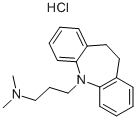
What is Imipramine hydrochloride?
Chemical properties
White Solid
Originator
Tofranil,Ciba Geigy,France,1959
The Uses of Imipramine hydrochloride
Imipramine hydrochloride is used as a serotonin uptake inhibitor. It mainly used in the treatment of major depression and enuresis (inability to control urination). It has also been evaluated for use in panic disorder.
The Uses of Imipramine hydrochloride
Tricyclic antidepressant; inhibits the serotonin and norepinephrine transporters. Has little effect on the dopamine transporter
The Uses of Imipramine hydrochloride
Antidepressant;5-HT transport inhibitor
What are the applications of Application
Imipramine hydrochloride is an inhibitor of serotonin and norepinephrine transporters
Manufacturing Process
20 parts of imino dibenzyl are dissolved in 100 parts by volume of absolutely
dry benzene. A suspension of 4 parts NaNH2 in 50 parts by volume of
absolute benzene are then added dropwise at 50° to 60°C after which the
mixture is boiled for an hour under reflux. 13 parts of 3-dimethylamino n_x0002_propyl chloride are then added dropwise at 40° to 50°C and the mixture is
boiled for 10 hours under reflux. After cooling, the benzene solution is
thoroughly washed with water, whereupon the basic constituents are extracted
with dilute hydrochloric acid.
The hydrochloric extract is then made alkaline and the separated base is
extracted with ether. After drying, the solvent is evaporated and the residue is
distilled in the high vacuum, whereby the N-(3-dimethylaminopropyl)-imino
dibenzyl passes over at a temperature of 160°C under 0.1 mm pressure. The
chlorohydrate with a melting point of 174° to 175°C is obtained therefrom
with alcoholic hydrochloric acid.
brand name
Janimine (Abbott); Pramine (Alra); Presamine (Sanofi Aventis); Tofranil (Novartis); Tofranil (Tyco).
Therapeutic Function
Antidepressant
General Description
Imipramine hydrochloride, 5-[3-(dimethylamino)propyl]-10,11-dihydro-5H-dibenz[b,f]azepine monohydrochloride(Tofranil), is the lead compound of the TCAs. It is also a closerelative of the antipsychotic phenothiazines (replace the10–11 bridge with sulfur, and the compound is the antipsychoticagent promazine). It has weaker D2 postsynaptic blockingactivity than promazine and mainly affects amines (5-HT,NE, and DA) via the transporters. As is typical of dimethylaminocompounds, anticholinergic and sedative (central H1block) effects tend to be marked. The compound per se has a tendency toward a high 5-HT-to-NE uptake block ratio andprobably can be called a serotonin transport inhibitor(SERTI). Metabolic inactivation proceeds mainly by oxidativehydroxylation in the 2-position, followed by conjugationwith glucuronic acid of the conjugate. Urinary excretion predominates(about 75%), but some biliary excretion (up to25%) can occur, probably because of the large nonpolargrouping. Oxidative hydroxylation is not as rapid or completeas that of the more nucleophilic ring phenothiazine antipsychotics;consequently, appreciable N-demethylation occurs,with a buildup of norimipramine (or desimipramine).
Biological Activity
imipramine (hydrochloride) is a tricyclic antidepressant and is mainly used in the treatment of major depression and enuresis [1].antidepressants are antagonists of many neurotransmitter receptors in human brain [3].imipramine is the first tricyclic antidepressant that acts mainly as an inhibitor of serotonin and norepinephrine transporters [2]. in radioligand binding assays, imipramine inhibited serotonin and norepinephrine transporters with kd values of 1.4 and 37 nm, respectively [2]. imipramine is also inhibited histamine h1 receptor, muscarinic acetylcholine receptor and α1-adrenergic receptor with kd values of 37, 46, and 32 nm, respectively [4].in rodents, imipramine abolished the depressive syndrome produced by the acute administration of reserpine. imipramine also possessed central anticholinergic activity and attenuate the activity of the centrally acting muscarinic agents tremorine and oxotremorine. imipramine inhibited the presynaptic uptake of na and 5-ht, and relatively weak against da [1].
Biochem/physiol Actions
Tricyclic antidepressant; inhibits the serotonin and norepinephrine transporters with Kis of 7.7 nM and 67 nM, respectively. Has little effect on the dopamine transporter (Ki = 25 μM).
Clinical Use
The demethylated metabolite is less anticholinergic, lesssedative, and more stimulatory and is a SNERI.Consequently, a patient treated with imipramine has twocompounds that contribute to activity. Overall, the effect isnonselective 5-HT versus NE reuptake.
Safety Profile
Human poison by ingestion. An experimental poison by ingestion, intravenous, subcutaneous, and intraperitoneal routes. An experimental teratogen. Human systemic effects by ingestion: sleep, somnolence, convulsions, muscle contraction or spasticity, coma, blood pressure decrease, dyspnea (difficulty in breathing), paresthesia (abnormal sensations), and kidney changes. Experimental reproductive effects. Mutation data reported. Used in the treatment of depression. When heated to decomposition it emits very toxic fumes of NO, and HCl. See also DIAZEPAM.
Veterinary Drugs and Treatments
In dogs and cats, imipramine has been used to treat cataplexy and urinary incontinence. In horses, imipramine has been used to treat narcolepsy and ejaculatory dysfunction (no parenteral dosage forms available).
Drug interactions
Potentially hazardous interactions with other drugs
Alcohol: increased sedative effect.
Analgesics: increased risk of CNS toxicity with
tramadol; possibly increased risk of side effects with
nefopam; possibly increased sedative effects with
opioids.
Anti-arrhythmics: increased risk of ventricular
arrhythmias with amiodarone - avoid; increased
risk of ventricular arrhythmias with disopyramide,
flecainide or propafenone; avoid with dronedarone.
Antibacterials: increased risk of ventricular
arrhythmias with delamanid, moxifloxacin and
possibly telithromycin - avoid with delamanid and
moxifloxacin.
Anticoagulants: may alter anticoagulant effect of
coumarins.
Antidepressants: enhanced CNS excitation and
hypertension with MAOIs and moclobemide -
avoid; concentration possibly increased with SSRIs;
risk of ventricular arrhythmias with citalopram
and escitalopram - avoid; possible increased risk of
convulsions with vortioxetine.
Antiepileptics: convulsive threshold lowered;
concentration reduced by carbamazepine,
phenobarbital and possibly fosphenytoin, phenytoin
and primidone.
Antimalarials: avoid with artemether/lumefantrine
and piperaquine with artenimol.
Antipsychotics: increased risk of ventricular
arrhythmias especially with droperidol, fluphenazine,
haloperidol, pimozide, sulpiride and zuclopenthixol
- avoid; increased antimuscarinic effects with
clozapine and phenothiazines; concentration
increased by antipsychotics.
Antivirals: increased risk of ventricular arrhythmias
with saquinavir - avoid; concentration possibly
increased with ritonavir.
Atomoxetine: increased risk of ventricular
arrhythmias and possibly convulsions.
Beta-blockers: increased risk of ventricular
arrhythmias with sotalol; concentration increased by
labetalol and propranolol
.
Clonidine: tricyclics antagonise hypotensive
effect; increased risk of hypertension on clonidine
withdrawal.
Dapoxetine: possibly increased risk of serotonergic
effects - avoid.
Dopaminergics: avoid use with entacapone; CNS
toxicity reported with selegiline and rasagiline.
Pentamidine: increased risk of ventricular
arrhythmias.
Sympathomimetics: increased risk of hypertension
and arrhythmias with adrenaline and noradrenaline;
metabolism possibly inhibited by methylphenidate.
Metabolism
Imipramine is extensively demethylated by first-pass
metabolism in the liver, to its primary active metabolite,
desipramine (desmethylimipramine). Paths of
metabolism of both imipramine and desipramine include
hydroxylation and N-oxidation.
About 80% is excreted in the urine and about 20% in the
faeces, mainly in the form of inactive metabolites. Urinary
excretion of unchanged imipramine and of the active
metabolite desipramine is about 5% and 6% respectively.
Only small quantities of these are excreted in the faeces.
Storage
Store at -20°C
References
[1]. spencer ps. review of the pharmacology of existing antidepressants. br j clin pharmacol. 1977;4suppl 2:57s-68s.
[2]. tatsumi m, groshan k, blakely rd, et al. pharmacological profile of antidepressants and related compounds at human monoamine transporters. eur j pharmacol. 1997 dec 11;340(2-3):249-58.
[3]. cusack b, nelson a, richelson e. binding of antidepressants to human brain receptors: focus on newer generation compounds. psychopharmacology (berl). 1994 may;114(4):559-65.
Properties of Imipramine hydrochloride
| Melting point: | 168-1700C |
| Flash point: | 9℃ |
| storage temp. | 2-8°C |
| solubility | H2O: 50 mg/mL |
| form | crystalline |
| color | white |
| PH | 4.2~5.2(100g/l,25℃) |
| Water Solubility | Soluble in water |
| λmax | 260nm(lit.) |
| Merck | 14,4920 |
| CAS DataBase Reference | 113-52-0(CAS DataBase Reference) |
| EPA Substance Registry System | 5H-Dibenz[b,f]azepine-5-propanamine, 10,11-dihydro-N,N-dimethyl-, monohydrochloride (113-52-0) |
Safety information for Imipramine hydrochloride
| Signal word | Danger |
| Pictogram(s) |
 Skull and Crossbones Acute Toxicity GHS06 |
| GHS Hazard Statements |
H300:Acute toxicity,oral |
| Precautionary Statement Codes |
P264:Wash hands thoroughly after handling. P264:Wash skin thouroughly after handling. P270:Do not eat, drink or smoke when using this product. P301+P310:IF SWALLOWED: Immediately call a POISON CENTER or doctor/physician. P405:Store locked up. P501:Dispose of contents/container to..… |
Computed Descriptors for Imipramine hydrochloride
Imipramine hydrochloride manufacturer
Festiva Pharma
New Products
4,4-Difluoropiperidine hydrochloride tert-butyl 9-methoxy-3-azaspiro[5.5]undecane-3-carboxylate Indole Methyl Resin N-Isopropylurea N,N-Dicyclohexylcarbodiimide(DCC) MELDRUMS ACID 5-METHYLISOXAZOLE-4-CARBOXYLIC ACID Magnessium Bis glycinate Zinc ascorbate 1-bromo-2-butyne 2-acetamidophenol 9(10H)-anthracenone Erythrosin B, 4-Piperidinopiperidine 2-((4-morpholinophenylamino) (methylthio) methylene) malononitrile 2,4-dihydroxybenzaldehyde 3-(4-morpholinophenylamino)-5-amino-1H-pyrazole-4-carbonitrile Methyl 2-methylquinoline-6-carboxylate 2,6-dichloro-4-nitropyridine 4-Bromo-2-chlorobenzonitrile 2-(benzylamino)acetic acid hydrochloride 4-(tert-Butoxycarbonylamino)but- 2-ynoic acid 3,4-dihydro-2H-benzo[b][1,4]dioxepine 1-Phenyl-1-cycloprppanecarboxylicacidRelated products of tetrahydrofuran
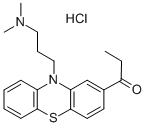


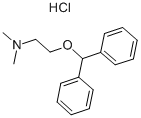


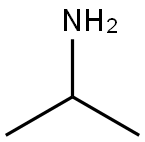
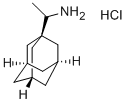
You may like
-
 113-52-0 Imipramine 98%View Details
113-52-0 Imipramine 98%View Details
113-52-0 -
 113-52-0 99%View Details
113-52-0 99%View Details
113-52-0 -
 Imipramine hydrochloride 98%View Details
Imipramine hydrochloride 98%View Details
113-52-0 -
 113-52-0 Imipramine hydrochloride 99%View Details
113-52-0 Imipramine hydrochloride 99%View Details
113-52-0 -
 Imipramine HCl Reference Standard 113-52-0 98%View Details
Imipramine HCl Reference Standard 113-52-0 98%View Details
113-52-0 -
 Imipramine hydrochloride 98% (HPLC) CAS 113-52-0View Details
Imipramine hydrochloride 98% (HPLC) CAS 113-52-0View Details
113-52-0 -
 Imipramine Hydrochloride CAS 113-52-0View Details
Imipramine Hydrochloride CAS 113-52-0View Details
113-52-0 -
 Imipramine hydrochloride CAS 113-52-0View Details
Imipramine hydrochloride CAS 113-52-0View Details
113-52-0
